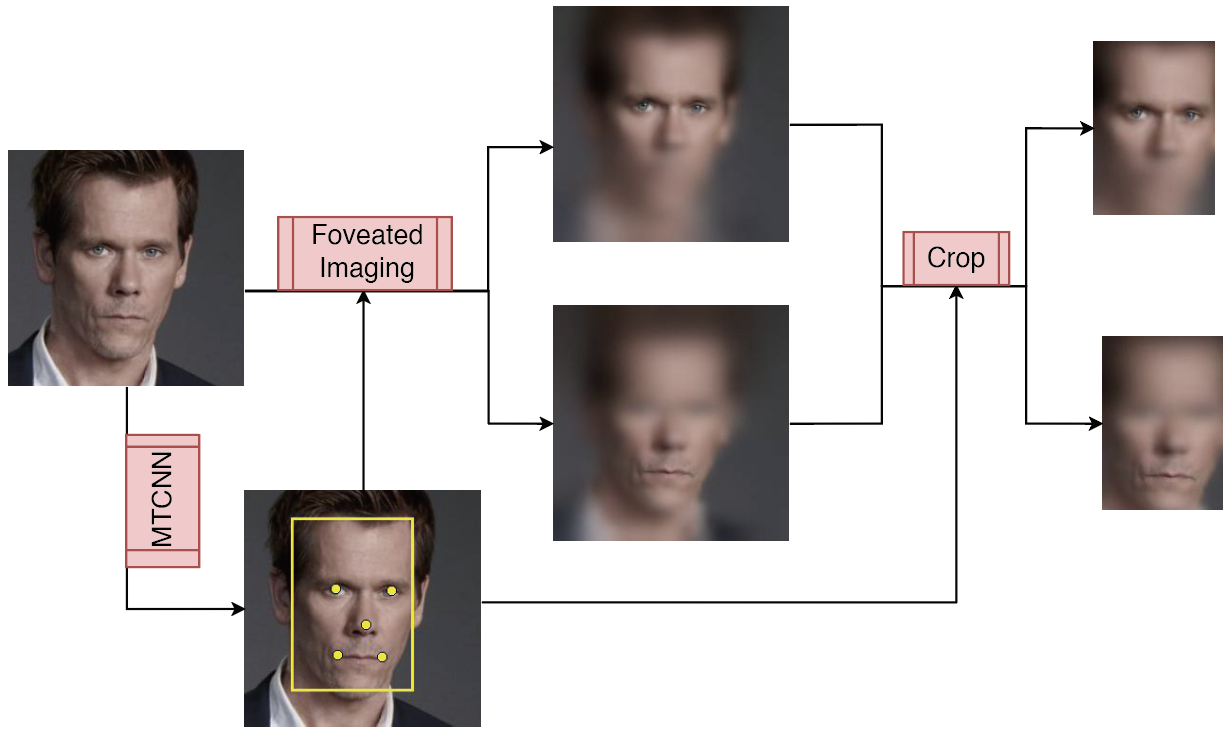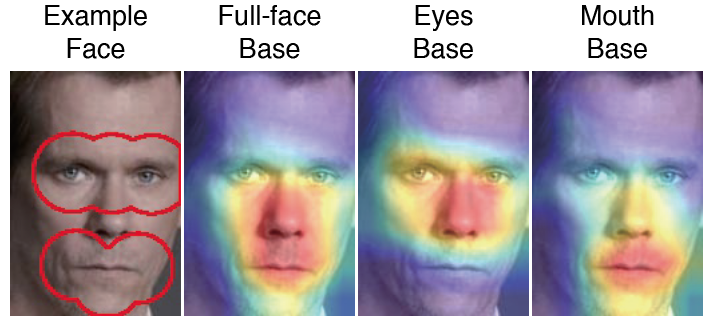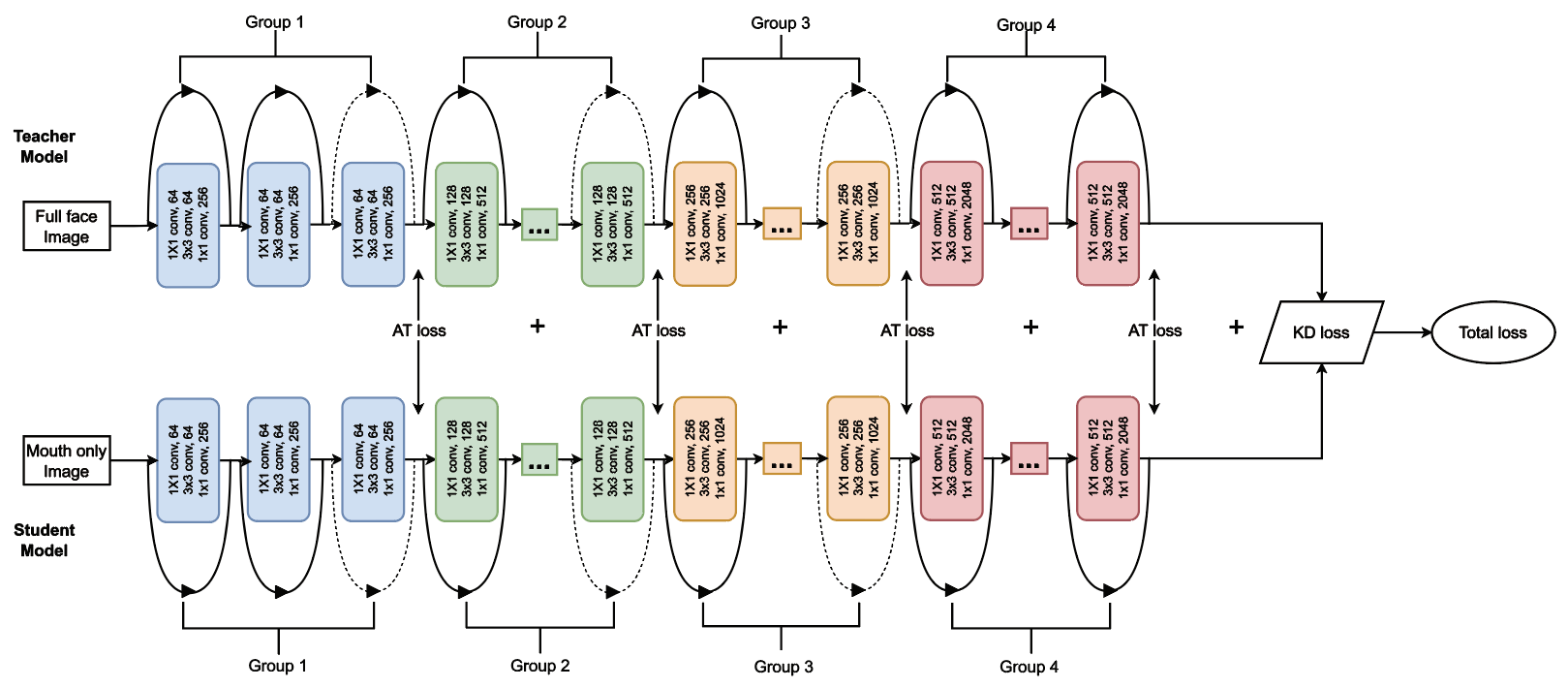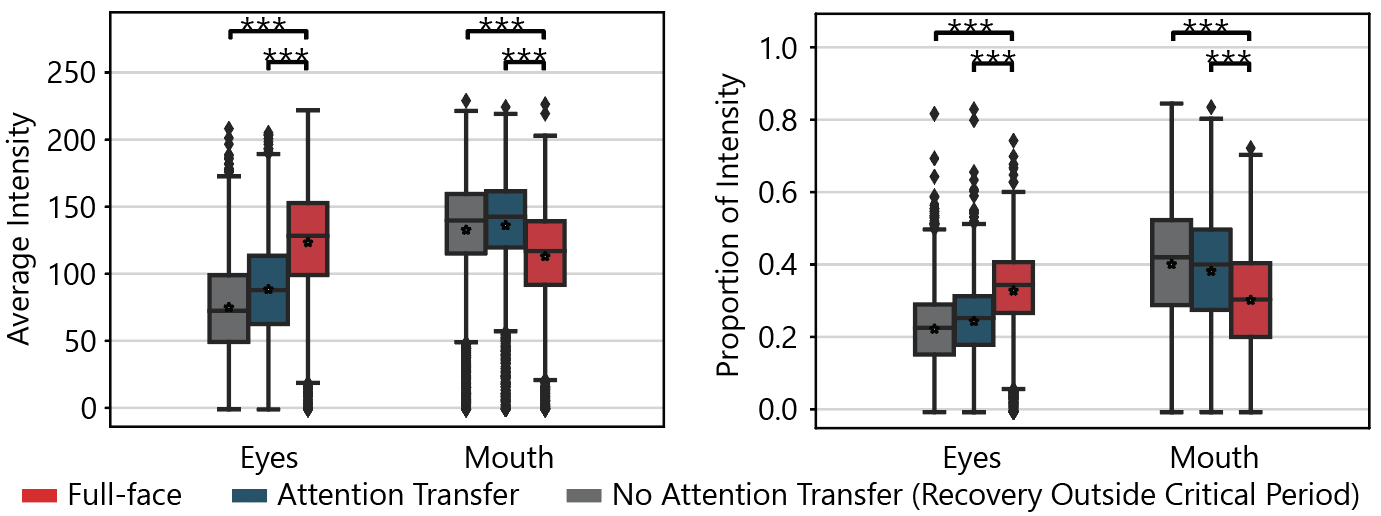We provide a full computational account for face-learning behaviors by using deep artificial neural networks and show that impaired face-learning can be restored when providing information within a critical period.
- numpy
- pandas
- scipy
- pickle
- matplotlib
- sklearn
- torchvision
The dataset used in this project is CASIA-WebFace.
You can download all the data used in this project with the link.
Here are some examples of the data:
This project is for academic research purposes only. The code in this repository is released under the MIT License. If you use the data provided, please cite Yi, Dong, et al. "Learning face representation from scratch." arXiv preprint arXiv:1411.7923 (2014).
We applied foveate blurring to generate the data using different eye fixations.
We found the critical period played an important role in the learning phase of face recognition.
We also proposed a method to recover the impairments caused during the Critical Period with an extremely low learning rate.
With Knowledge Distillation and Attention Transfer, we recovered the accuracy of the impaired model.
The recovery is also confirmed by statistical metrics
@article{wang2024critical, title={A critical period for developing face recognition}, author={Wang, Jinge and Cao, Runnan and Chakravarthula, Puneeth N and Li, Xin and Wang, Shuo}, journal={Patterns}, volume={5}, number={2}, year={2024}, publisher={Elsevier} }








